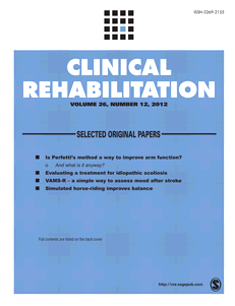
Shoulder & Elbow
A trend for favourable outcomes with the use of PRP for rotator cuff lesions
This report has been verified
by one or more authors of the
original publication.
Clin Rehabil. 2013 Feb;27(2):113-22. doi: 10.1177/0269215512448388. Epub 2012 Oct 3
39 patients with a lesion of the supraspinatus tendon were randomized to receive either platelet-rich plasma (PRP) injections or dry needling to determine the comparative efficacy of the treatments for rotator cuff pathology. Follow-up was conducted for 6 months following the second injection, which took place 4 weeks after the first injection. Analysis at final follow-up indicated that total score on the Shoulder Pain and Disability Index was significantly better in the PRP group; however significance did not remain when pain and disability subscales were assessed individually. Improvement in range of motion was consistently higher at 3 and 6 months in the PRP group, and reached significance in forward flexion and internal rotation.
Unlock the full article
Get unlimited access to OrthoEvidence with a free trial
Start TrialCritical appraisals of the latest, high-impact randomized controlled trials and systematic reviews in orthopaedics
Access to OrthoEvidence podcast content, including collaborations with the Journal of Bone and Joint Surgery, interviews with internationally recognized surgeons, and roundtable discussions on orthopaedic news and topics
Subscription to The Pulse, a twice-weekly evidence-based newsletter designed to help you make better clinical decisions
Exclusive access to original content articles, including in-house systematic reviews, and articles on health research methods and hot orthopaedic topics
Or continue reading this full article
Register Now

Subscribe to "The Pulse"
Evidence-Based Orthopaedics direct to your inbox.





































